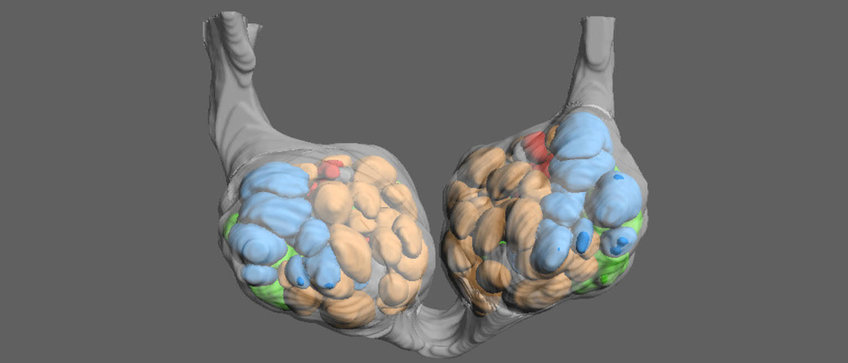
Digital In Vivo 3D Atlas of the Antennal Lobe of Drosophila melanogaster
As a model for primary olfactory perception, the antennal lobe (AL) of Drosophila melanogaster is among the most thoroughly investigated and well-understood neuronal structures. Most studies investigating the functional properties and neuronal wiring of the AL are conducted in vivo, although so far the AL morphology has been mainly analyzed in vitro. Identifying the morphological subunits of the AL—the olfactory glomeruli—is usually done using in vitro AL atlases. However, the dissection and fixation procedure causes not only strong volumetric but also geometrical modifications; the result is unpredictable dislocation and a distortion of the AL glomeruli between the in vitro and in vivo brains. Hence, to characterize these artifacts, which are caused by in vitro processing, and to reliably identify glomeruli for in vivo applications, we generated a transgenic fly that expresses the red fluorescent protein DsRed directly fused to the presynaptic protein n-synaptobrevin, under the control of the pan-neuronal promotor elav to label the neuropil in the live animal. Using this fly line, we generated a digital 3D atlas of the live Drosophila AL; this atlas, the first of its kind, provides an excellent geometric match for in vivo studies. We verified the identity of 63% of AL glomeruli by mapping the projections of 34 GAL4-lines of individual chemosensory receptor genes.